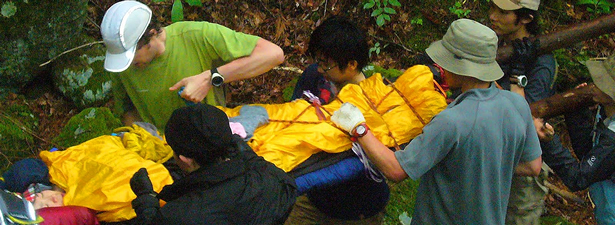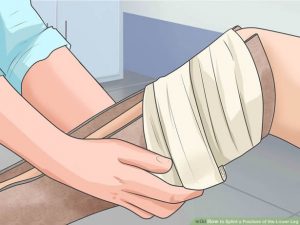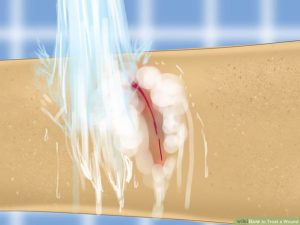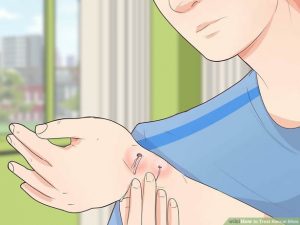How to Field Treat an Injury in the Wilderness

The great lengths most people go to in the name of adventure never cease to amaze. Nothing provides an adrenaline rush more than a trip to the forests or the mountains for a hike. Most of these places are highly secluded with very little or no cell reception in some instance. No one anticipates an accident. If danger strikes, quick response is vital for recovery. Here are some of the ways to treat some of the injuries occurring in the wilderness.
Fractures
One of the worst injuries to experience during a hiking trip or any other adventure is a fracture. It renders the patient immobile. A fracture situation can be impossible to deal with alone. Always carry a phone if going alone. If there are other people, this is what they should do.
 Lay the patient still and avoid any movements. It will prevent further injuries from the broken bones such as perforating the blood vessels or cutting nerve endings. It is always important to go on such trips with a guide certified in first aid. They might be the only people strong and courageous enough to carry out the traction. Traction sets a broken or dislocated bone back into its place. It helps reduce the pain significantly.
Lay the patient still and avoid any movements. It will prevent further injuries from the broken bones such as perforating the blood vessels or cutting nerve endings. It is always important to go on such trips with a guide certified in first aid. They might be the only people strong and courageous enough to carry out the traction. Traction sets a broken or dislocated bone back into its place. It helps reduce the pain significantly.
To avoid further movement and in turn pain, a temporary split is necessary. It can be made using tree branches tied together with pieces of clothes to support the broken bones. The next step is to get help to transport the patient to the hospital. Patients with arm injuries can move slowly by supporting the arm, but those with limb injuries may need a stretcher.
Open Wounds
Open wounds occur when the skin surface is broken to expose blood vessels to further damage. Common causes are cuts, falls and general pressure on the skin. Open wounds face a major risk of infection. The outdoor is home to many types of bacteria which are the biggest cause of wound infections. This usually happens when a hiker falls and gashes themselves or a fisherman cuts himself while trying to bait the rod while crappie fishing.
 To prevent this, cleaning the wound is the first cause of action. A water bottle can be used to pour continuous jets of water on the wound. Other sterilizing agents can be utilized if available. Covering the wound is essential in preventing further exposure to bacteria. If the injury is already infected, leave it open to fresh air after cleaning and head straight to a health practitioner.
To prevent this, cleaning the wound is the first cause of action. A water bottle can be used to pour continuous jets of water on the wound. Other sterilizing agents can be utilized if available. Covering the wound is essential in preventing further exposure to bacteria. If the injury is already infected, leave it open to fresh air after cleaning and head straight to a health practitioner.
Burns
Burns occur mostly in campers. The big bonfire at the center is always fascinating till it’s not. Someone might accidentally step on the fire or catch a burn from amber blown out by the wind. The First thing is to remove any clothing that may worsen the injury, but if it is at the point of merging with the skin, it should be left on. In the latter situation, immediate cooling is then necessary.
Pour cold water on the burnt area. Cover the burnt surface to prevent exposure and water loss. Burn ointments can be used or honey. Removing other constricting clothes or accessories is important. It will help avoid edema which will have already been setting in due to the burn.
Animal Bites
Most people who do not have a friendly relationship with the outdoor attribute it to numerous bugs and other small animals. Most common animal bites are from snakes and spiders. It is always important to carry anti-venom when visiting areas famous for such animals.
 After the bite, the patient needs to stay immobile to keep the heartbeat at minimal. It reduces the spread of the venom in the blood vessels. Tightly tie the body part after the bite to restrict blood flow then get the patient to a doctor.
After the bite, the patient needs to stay immobile to keep the heartbeat at minimal. It reduces the spread of the venom in the blood vessels. Tightly tie the body part after the bite to restrict blood flow then get the patient to a doctor.
Plant Irritation
Some of the naturally occurring plants have a stinging effect as a protective adaptation. Everyone is not a botanist and may not identify such plants on time. Start by thoroughly cleaning the exposed part.
After apply topical steroid creams on the affected area. It may help prevent extreme reactions such as swelling. In cases where topical creams are not available, keep cleaning the area and head immediately to a clinic for further treatment.
It is important to realize the effectiveness of treatment offered in the wilderness will depend on the available material. It is paramount that all outdoor lovers have a safety and first aid kit as they head out. The simple treatment before seeing a doctor may go a long way in avoiding major problems.
![]()
About the Author
Jack Neely is a fitness expert, survivalist, and world traveler. He’s been in several life or death situations, and he’s making an effort to spread his knowledge around the web to help others survive these situations as well.
All content provided courtesy of Jack Neely.
Header image courtesy of tozai-trek.com, all other images courtesy of wikihow.com.
--